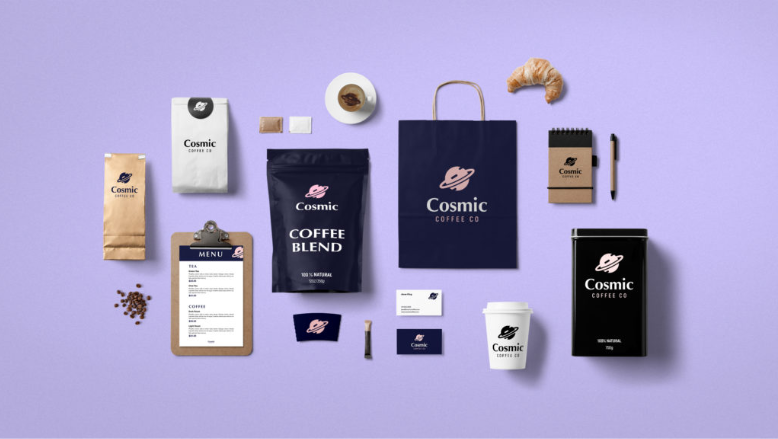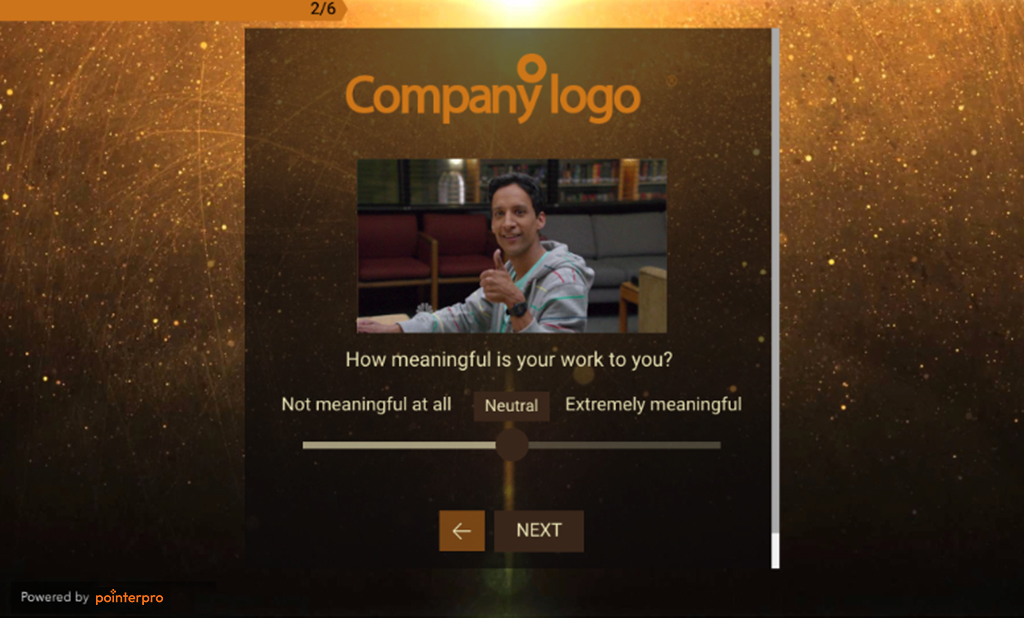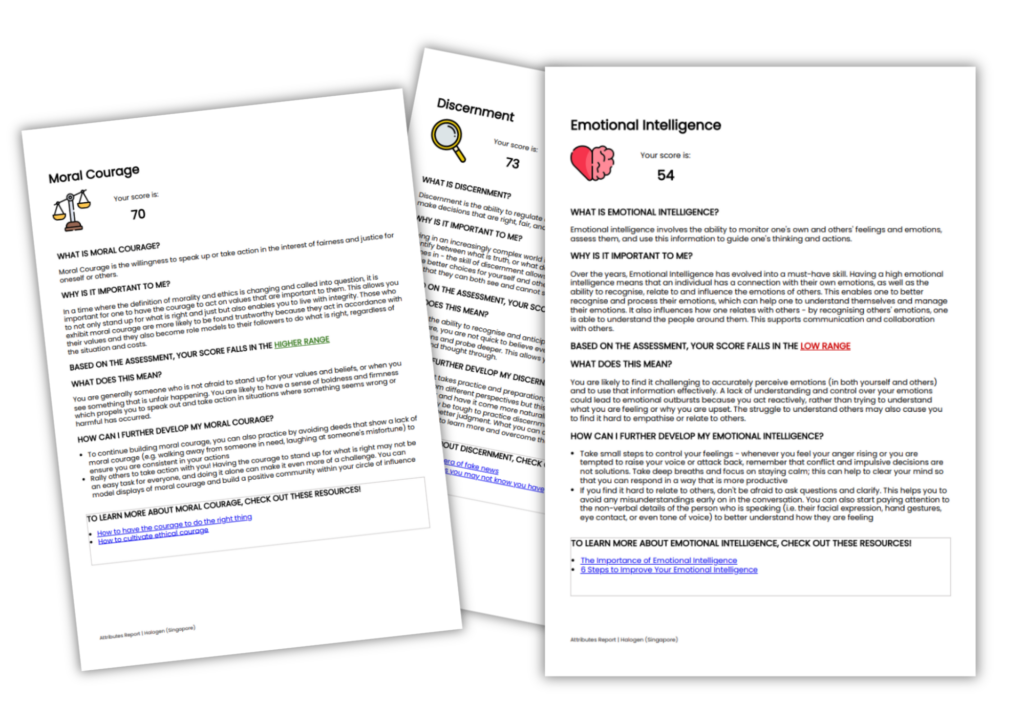While companies have long known the importance of a strong brand for attracting and retaining customers, they’re just starting to understand the value of having a strong brand for attracting and retaining employees.
Gone are the days of a simple paycheque and occasional office party being enough to attract and keep the best talent. Today’s employees are looking to do meaningful work for companies that stand for something more than just profit. When you consider that 9 out of 10 employees are willing to take a pay cut if it means more meaningful work, your company’s brand might just be your biggest asset.
Having a strong mission, vision, and values—the components behind your brand—is essential, but building a successful employer brand takes more than just determining what your mission, vision, and values are. By assessing your current employer brand and taking key steps to improve it, you can start building the culture and workforce you’ve always wanted.
What is brand?
Before you can start assessing and improving your employer brand, you need to start at square one. What is brand anyway?
When most people think ‘brand’ what comes to mind are things like creating your slogan, or making a logo, or brand colors. While those are important elements of your brand identity, they aren’t your actual brand. If they were, improving your employer brand would be as simple as popping a few logo stickers on your office furniture or handing out a few on-brand swag items. But that isn’t the case.
Rather, brand isn’t anything tangible at all. Brand is made up of all the associations, feelings, stories, and memories people have about your company. Each brand needs to create logo design ideas and colors based on these associations. In the case of employer brand, it’s those associations that your employees—former, current, and future—have when they hear your name.
Today’s employees are making their perceptions known, with company review site Glassdoor seeing 60 million monthly visitors and hosting 55 million reviews, salaries, and insights. Try as you might, you won’t be able to overpower your employees’ voices by projecting a different version of your brand. But that doesn’t mean building a strong employer brand is a lost cause.
What a good employer brand looks like
Just because you can’t influence your employer brand directly doesn’t mean you can’t influence it indirectly. The way to do this is to look at your mission, vision, and values (MVV).
Your MVV usually comes to life in two ways in your company. The first is the way these founding principles are used in building your brand identity, which is primarily a tool for communicating with customers. The second is the way these founding principles are used to build your company’s culture, which is your primary tool for communicating with employees.
A good employer brand maintains consistency between MVV, brand identity, and culture. If you want employees to perceive your brand a certain way, you need to consistently portray it that way. If you say something is your mission, your brand identity and the marketing that leverages it should reflect that. If you claim something to be a core value, you need to foster a culture that rewards that value. If your brand identity and marketing hinge on one central vision, your employees should be given the resources to actually pursue that vision.
When a disconnect happens, the consequences can be dire. Just look at Google, who long championed open debate as one of the key tenets of their culture. After shutting down numerous groups that acted on this value, employees were outraged. Google failed to live its values, and employees weren’t afraid to call them out on it.
The best employer brands are authentic. By creating an authentic, consistent experience for employees, you can narrow the gap between how you want to be seen and how you’re actually seen. The smaller this gap, the stronger your brand.
Assessing your employer brand
Now that you know what your employer brand is and why it matters, let’s discuss how you can create an assessment for your employer brand. There are two key factors that you’re going to need to measure in this assessment: brand awareness and brand alignment.
Measuring brand awareness will show you how well you’ve communicated your desired brand to your employees. Here, Pointerpro has a great brand awareness survey template you can use to start determining your level of brand awareness amongst employees.
Using this template, you can start by assessing basic brand recall and brand recognition. Questions related to recall and recognition will show you whether your employees are familiar with your brand and industry at the surface level.
After you’ve established your employees have a basic understanding of your brand, you can start to ask more complex brand awareness questions about brand identity and brand image. These questions will show whether the traits you’re trying to portray in your branding efforts align with how your employees perceive them.
Lastly, you can use your brand awareness survey to inquire after brand trust and brand loyalty. Discovering whether your employees find your brand trustworthy and loyalty-worthy will tell you a lot about whether they see your brand as authentic.
While a brand awareness survey will tell you a lot about your employees’ perception of your branding efforts, it won’t give you the full picture of their experience. Just because employees can remember your brand identity and desired brand image doesn’t mean they believe in them. You may have communicated your brand, but still not incorporated it into your culture.
To get a better understanding of how well your brand aligns with your company’s culture, you should couple your brand awareness survey with a job satisfaction survey. By getting a sense of your employees’ satisfaction with their work, you’ll be able to see how well you’ve brought your brand to life in your culture.
Using Pointerpro’s template, you can ask employees about how they feel about their work environment, what they like and dislike about your culture, and whether they feel engaged with their work. By measuring satisfaction, you’ll get a sense of your company’s brand alignment—and authenticity. Plus, if you’ve already put MVV culture initiatives in place, this survey is the place to measure how effective those efforts have been.
Between the Brand Awareness and Job Satisfaction surveys, you’ll gain a sense of brand awareness and brand alignment. By understanding how well your employees know your brand and whether you’ve incorporated that brand into your culture, you’ll be able to assess which specific areas of your employer brand that need improvement.
Improving your employer brand
Now that you’ve assessed areas of weakness in your employer brand, it’s time to make a change. Depending on the results of your surveys, there might be a few different paths to take.
Low awareness, low alignment
In this case, employees are unaware of the employer brand you’re looking to build and are unhappy in their jobs. Here, you’ll want to start by communicating your mission, vision, and values more clearly, while simultaneously working to incorporate them in more company activities.
High awareness, low alignment
If your results indicate high awareness and low alignment, you’ve likely got a culture problem on your hands. While your employees know about your brand, they’re not seeing it come to life in your culture. Focus on bringing your mission, vision, and values to life in your culture, while maintaining consistency with how you portray your brand externally.
Low awareness, high alignment
Now, this might sound like an unlikely combination, but it can happen. Employees might be highly engaged and aligned around an employer brand—just not the one you intended to create. In this instance, you’re better off adjusting your employer brand to your culture. If your employees are all happy working towards a mission that differs from the one you set out, it might be time to shift your mission to match reality.
High awareness, high alignment
If you’ve managed to receive results indicating high awareness and high alignment, consider yourself lucky. Your employer brand is in good shape! To keep a good thing going, invest your energy in maintaining brand awareness and brand alignment, by continuing to communicate with your employees and nurture a culture that brings your mission, vision, and values
Bringing your employer brand to life
As you begin assessing and improving your employer brand, you need to remember one important thing. These things take time. Building alignment and authenticity around your brand isn’t something that happens overnight. If you really want to create a strong employer brand, you need to be willing to put the time into ensuring that your internal brand aligns with your external brand and that your brand’s MVV aligns with your culture.
In everything you do—whether it’s a marketing campaign, a culture initiative, or just the way you speak to employees—consider the employer brand you’re looking to build. The more consistent you are in your employer branding efforts, the more authentic your employer brand becomes. Remember: the best employer brand isn’t the one that’s the most perfect on paper—it’s the one that’s the most real.










